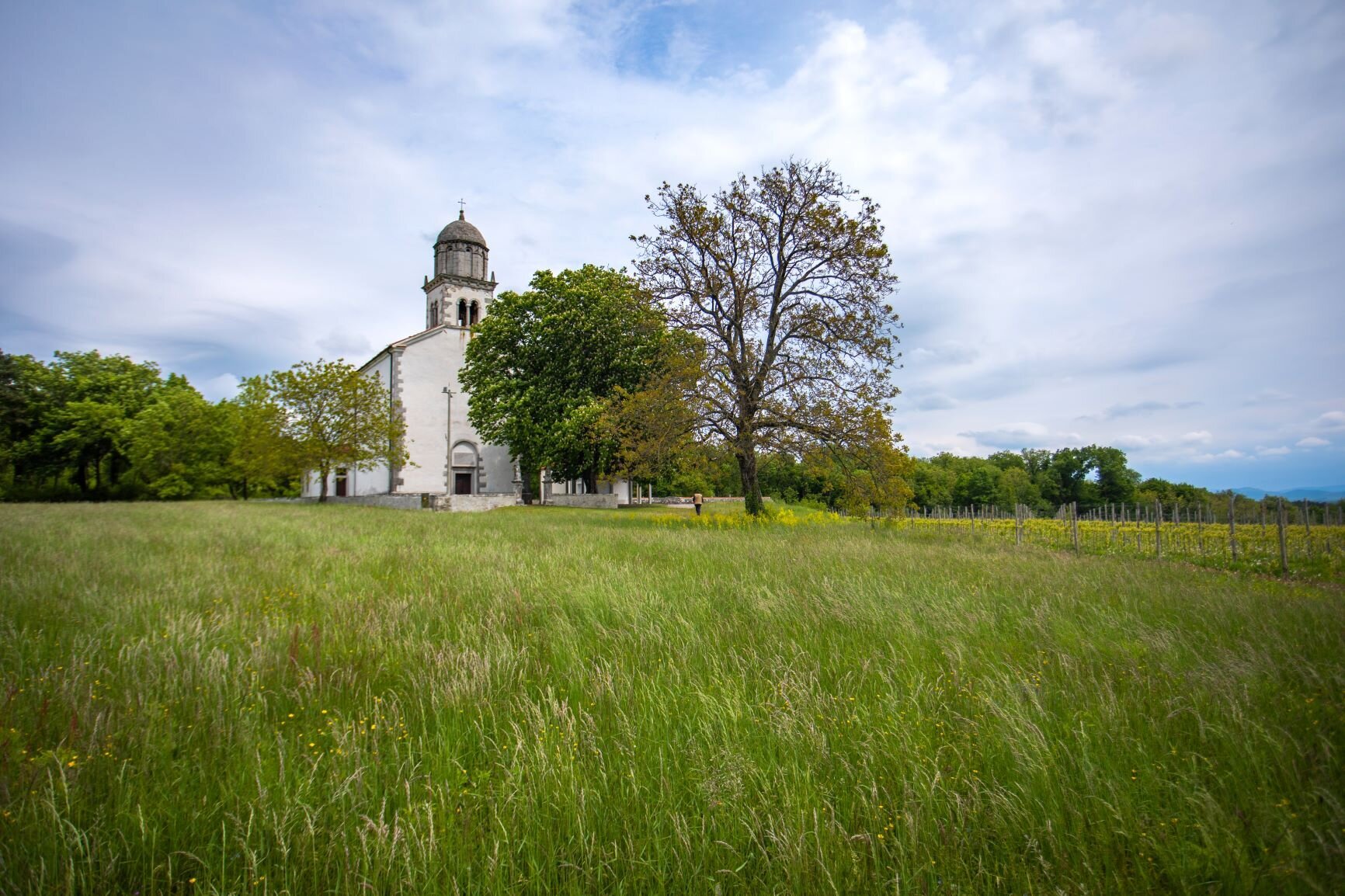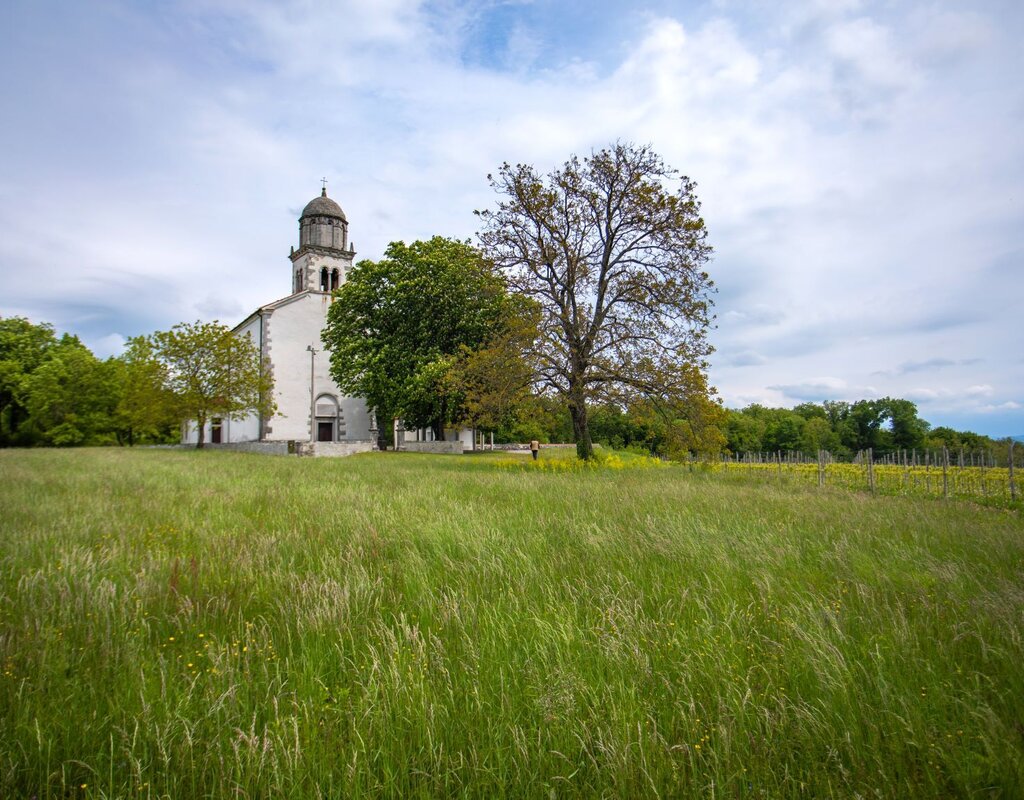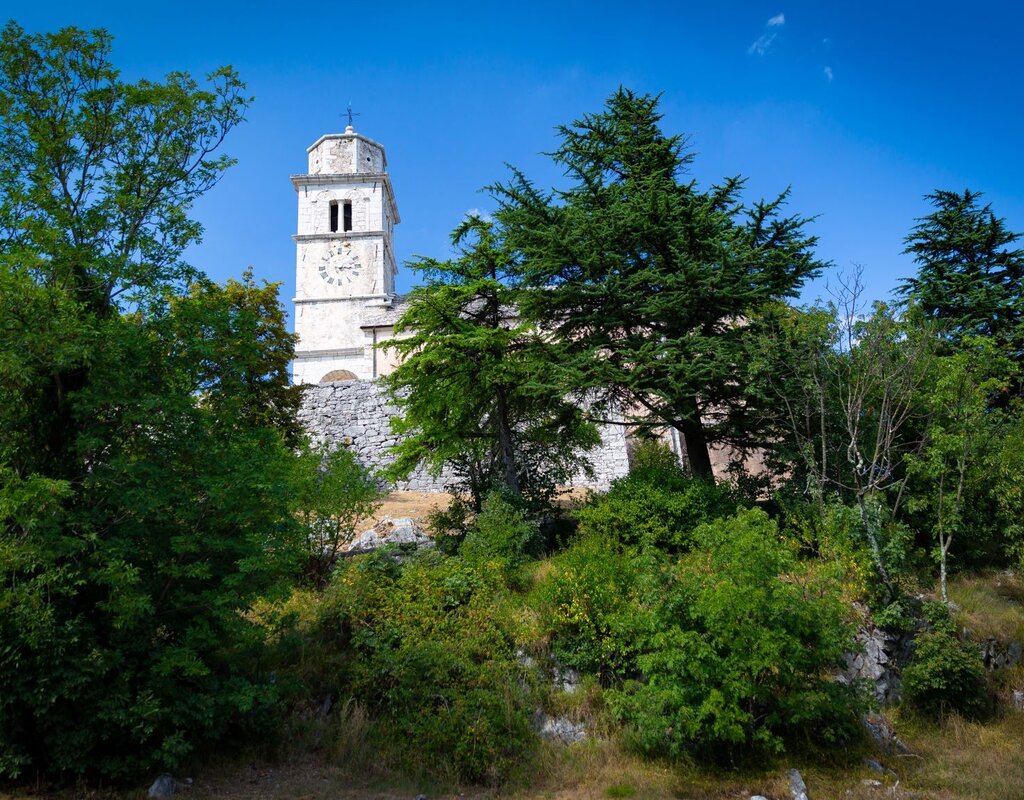Pilgrimage places in the Karst

Popular churches and a shrine carved in stone are the heritage of a tradition going back several centuries.
The places that hold special meaning in the Christian tradition are even today popular destinations for pilgrims. In the Karst, three different places invite you to visit them and explore their sacral monuments, marked by the pilgrimage tradition.
The Pilgrimage Church of the Virgin Mary at Obršljan, Tomačevica
The church, standing on the hill above the road between the villages of Tomačevica and Komen, was most likely built in 1585 when this place was a famous pilgrimage centre. The original shrine was reconstructed several times and an important church emerged, being renovated in 1644. Legend has it that the Virgin Mary with baby Jesus appeared before a shepherd on this place. She was sitting on a beautiful throne, completely overgrown with ivy.
The church was visited especially on the feast day of the Assumption of Mary, namely 15 August, when worshippers came from near and far on a pilgrimage, mostly from the Karst and the Vipava Valley. Its peculiarity was a ‘papal bull’, an ecclesiastical document with which Pope Urban VIII decreed indulgences for the church for all eternity. It is known that pilgrims often asked the Virgin Mary for rain as the Karst often suffered from a shortage of drinking water.
The interior of the church took on its baroque appearance in the 18th century. It is praised for its lavish wall paintings and the wax statue of Mary with Jesus from the 19th century, one of the largest of its kind in Slovenia.
The Valley of Our Lady of Lourdes in Lipica
In the vicinity of Lipica you can walk into a special small valley, which has become a true temple. Well-arranged paths, dotted with flowers, lead to a shrine carved into rock, with a statue of the Mother of God. It was erected by Karel Grünne, who managed the Lipica Stud Farm in the 1848-1875 period, as a sign of gratitude. He was seriously ill and had found consolation in the valley, where he used to spend days before he was cured. Grateful for his restored health he arranged pathways in the valley and decorated them with flowers, turning the area into an unusual holy place. Legend has it that miraculous healings have kept occurring in the valley ever since. Before World War II, masses of people would go on a pilgrimage to this miraculous place.
You can combine a visit to this special little valley and unique shrine with a visit to the Lipica Equestrian Park. This beautiful cultural landscape, with its meadows and pastures, fenced-off areas, majestic oaks and avenues of trees, is the epitome of peace and relaxation.
www.lipica.org
The Church of the Assumption of the Blessed Mary in Repentabor
Right next to the country’s border, in the Municipality of Repentabor (Italian name: Monrupino) in the Province of Trieste, stands the famous Repentabor Church dedicated to the Virgin Mary. The majority of the people in the Municipality of Repentabor are Slovenian by nationality, which is why the church is known as a Slovenian pilgrimage centre.
The church is located on the Tabor Hill where signs of the turbulent past are still visible today. On one of Tabor’s slopes, the remains of a hillfort dating back to the mid 2nd millennium BC were found, whereas the Roman period has left the ruins of a defence tower and a triple defence wall. At the western entrance to the hillfort is a Slovenian inscription from 1828, stating that the Tabor Hill was rebuilt again in 911.
The Repentabor Church is first mentioned in a parish document from 1316, giving valuable proof of the uninterrupted existence of Slovenian people in this area. The church was renovated and expanded in 1512 and was again renovated and fortified in 1559, following Turkish incursions into the area. At that time, the church was turned into a fort and, within its walls, other buildings remain today. The church acquired its current shape in 1750.
The Church of the Assumption of the Blessed Mary in Repentabor used to be an important pilgrimage centre that attracted masses of pilgrims on a procession from Trieste, Sežana and many smaller places in the Karst on the feast day of the Assumption of Mary. The pilgrimage church today attracts many visitors also for its beautiful views of the Karst, the Adriatic Sea and the Alps.




